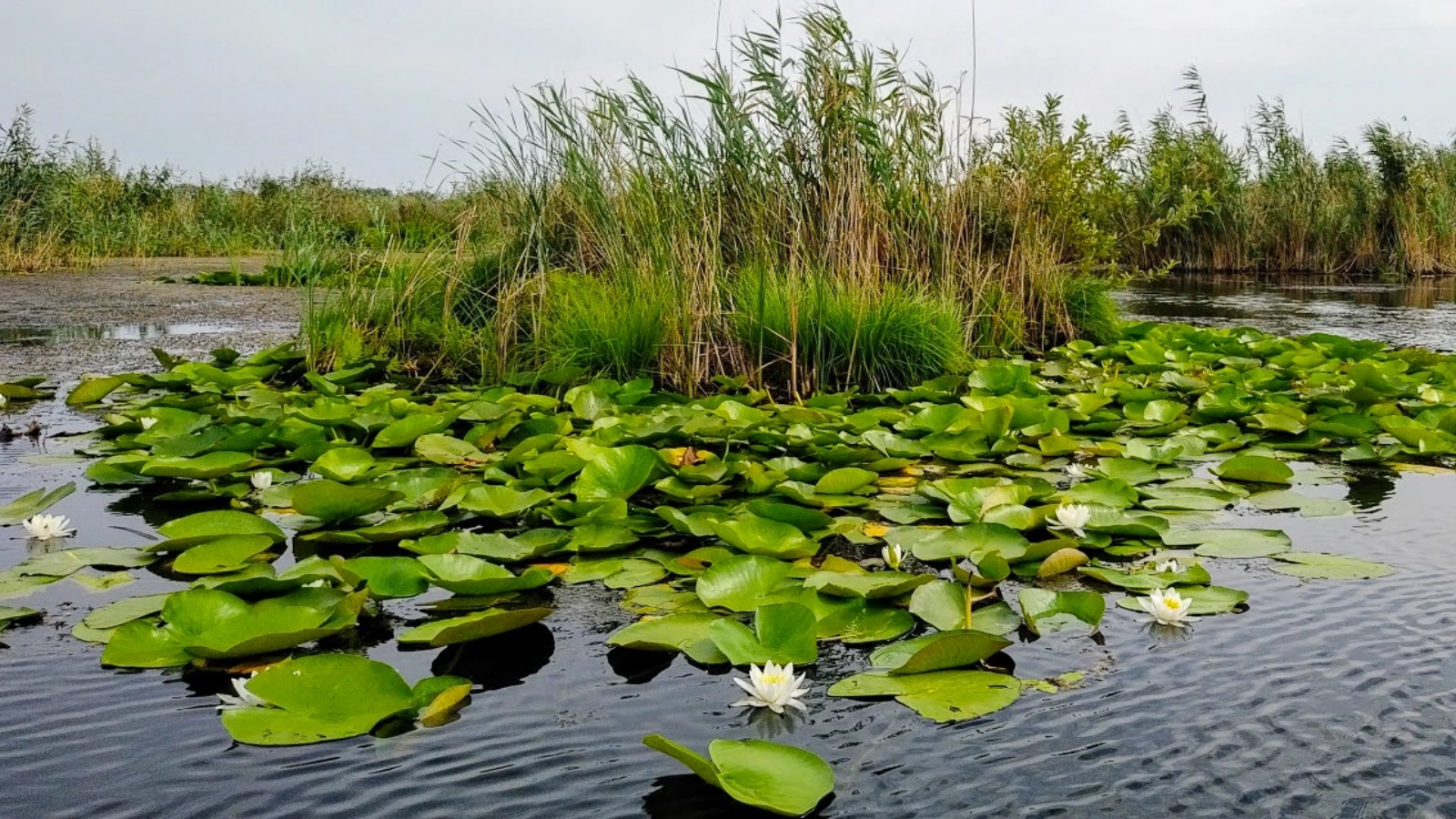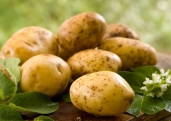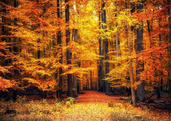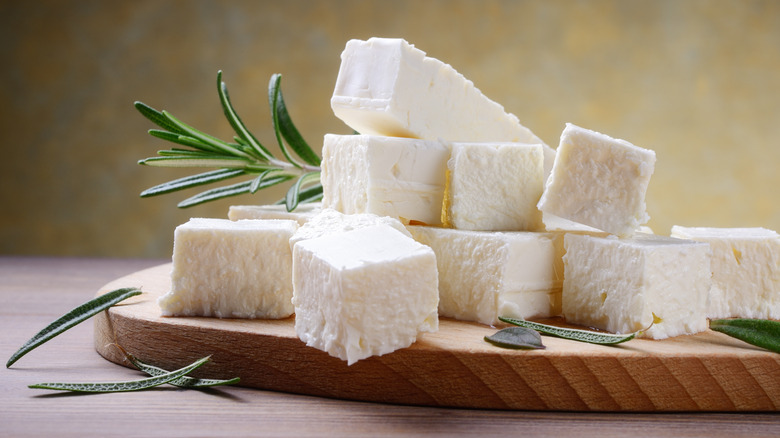The reed and the reed beds cover about 173,000 hectares of the Danube Delta Biosphere Reserve, ensure the depollution of the water and are the habitats of some species of birds.
Perennial plant made of two distinct parts, one aerial, stem, with an annual life cycle that constitutes both the recoverable resource, and another submerged, the rhizome, fixed in the moist soil or completely covered with water, penetrating up to 1.5 meters deep, the reed is the most common plant in the Reserve and among the most important.
"The reed beds represent an important natural filter for contaminated water, constituting a barrier for the entry of pollutants into the Black Sea. The reed along the canals and rivers reduces the erosion effects of the banks caused by the water currents and contributes to the retention of sediments in the flood water. The reed beds have an important role in the depollution of the flood waters through the physico-chemical and biological properties that induce the metabolic chemical conversion," reads a paper signed by the representative of the National Institute for Research and Development Danube Delta (INCDDD), Jenica Hanganu.
The reed beds represent the main habitat for many species of birds, such as the Eurasian bittern (Botarurus stellaris), the dwarf heron, the reed harriers, the Eurasian coot (Fulica atra), the common moorhen (Gallinula chloropus) and the water rail (Rallus aquaticus). Other birds use reeds for nesting, such as the pelican, the large egret and the red heron. Some birds, such as the Eurasian coot, the cormorant, the marsh tern and the herons, use varnishes and water meshes between the reed beds.
Floating reed, formations of reed rhizomes, up to 1.5 meters thick, can be fixed to the substrate or can be floating when the water level is high. The common sallow, a shrub that can have a height of up to five meters, often accompanies the reeds on the floating reed formations.
"The areas covered with common sallow have the tendency of extension, as a result of reducing the activities of reed harvesting and sanitizing by burning, activities that have the effect of partially destroying the brush of willow and common sallow," is specified in the work signed by the INCDDD researcher.
The floating reed and floating reed islands of the Delta represent a valuable and unique environment for mink, wild boars and other species, these formations offering them protection by providing an environment difficult to access by ordinary predators. In the same areas you can meet the otter, the small ermine or short-tailed weasel, the wild cat, the fox, the common raccoon dog and the muskrat.
"Many species of fish from the Danube Delta sometimes reproduce or feed in reeds. Thus, the perch, the whitewash, the crucian carp, the roach (Rutilus rutilus) and the tench (Tinca tinca) cohabitate in the reeds, and also here the carp, the luce, the catfish and the bream are sheltered in summer, during the big heats," mentions the INCDDD specialist.
Traditionally, reed is used in households as a building material, as a source of heat in winter and as fodder for domestic animals. The traditional 1 March Martisor trinckets, hats, purses, but also objects for household use, carpets, interior decoration objects, partitions, fences, shelves or shade are also made by reed. Also, from reed are made the braidings for the protection of river banks and dams from flooding.
"Reed is also an important raw material for cellulose and paper. This feature and the large volume of resources in the Danube Delta were the motivation that during the 1960s an action of knowledge of the biology and ecology of the reed was launched, being established in Maliuc the experimental reed station subordinated to the Ministry of Chemistry, to proceed to the arrangement of reed enclosures with directed hydrological regime and to import adequate harvesting equipment from the former German Democratic Republic," the source says.
In order to capitalize the mass of reed for the production of cellulose, in Chiscani, near Braila, a cellulose and paper plant was established, the reed from the Delta being transported with barges on the Danube. For harvesting, packing and loading reed, especially in the winter months, when there was an ice bridge, political prisoners were used as labour.
"I was detained in 14 places, but in the Danube Delta I went to Periprava - center, to Grindu section and on floating ferries to harvest reed. Two years I was here (...). We were deprived of minimal hygiene and medical assistance. Torture and beatings were the order of the day, especially when work norms were not met. Hunger was terrible. Each of us had at least 10-20 kilograms less than they should have had," told AGERPRES a few years ago, the president of the Association of Former Political Prisoners in Romania, Octav Bjoza.
According to INCDDD, the use of harvesting machines inadequate to the environmental conditions had as a consequence the degeneration of reed on large areas, which led to the gradual reduction of the harvested reed mass until the abandonment of the project in the 1960s. The technological line from Chiscani has been re-oriented on wooden mass, and the reed harvesting is done in smaller and smaller quantities. Thus, if in the years 1962-1964, the reed volumes harvested were 240,000 tonnes annually, in the period 2003-2004 only a few thousand tonnes were harvested.
































Comentează